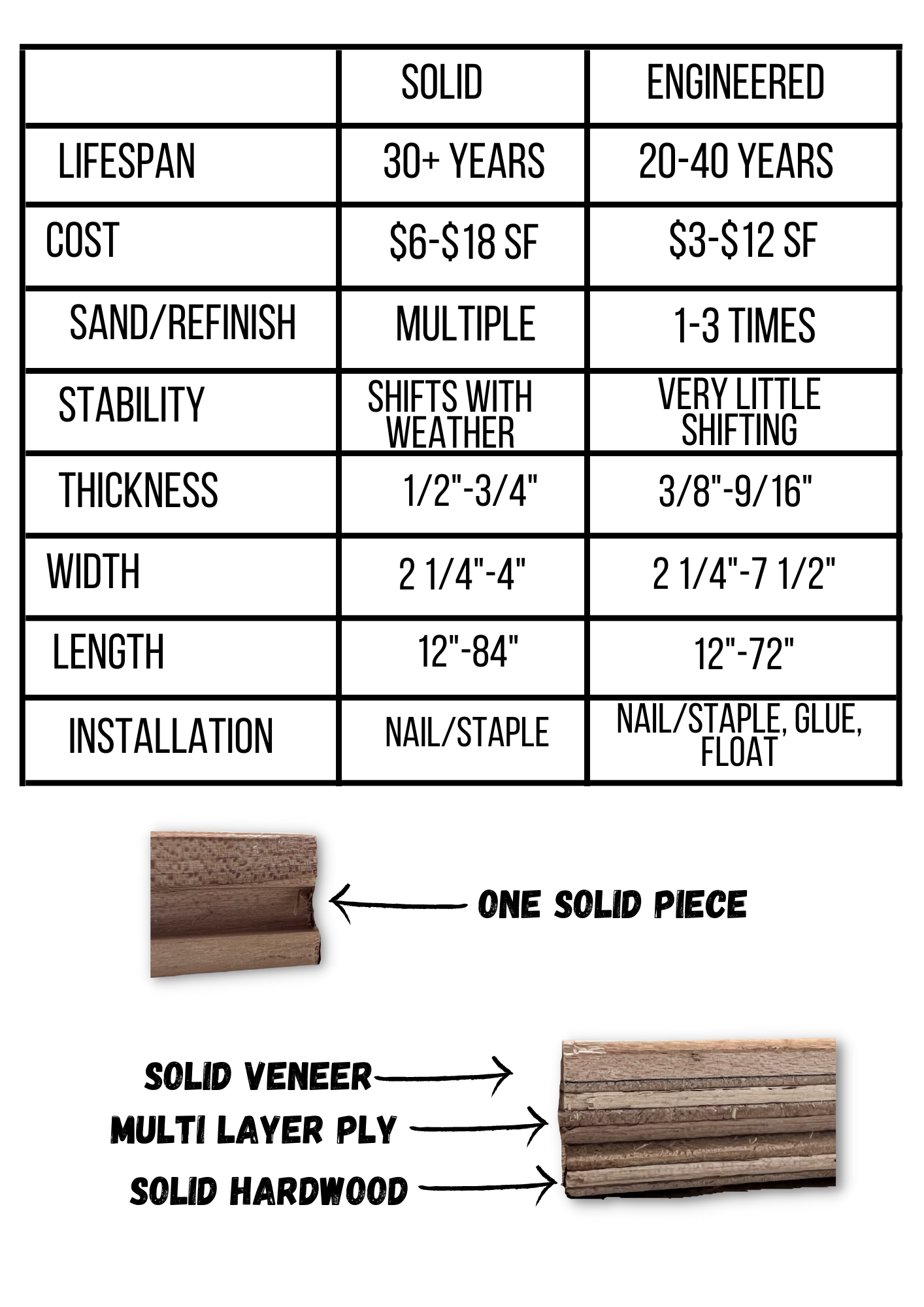Engineered Hardwood VS Solid Hardwood:
What's the difference?
Let's face it. Things just aren't made like they used to be and that can be scary. However, just because a product has been around longer doesn't mean it is the best (for you), especially when it comes to flooring, so let’s go over the make up of each.
Solid Hardwood:
Solid Hardwood is 100% real wood, milled into planks with a tongue and groove. Solid hardwood can be sanded and refinished several times, and is known for its durability. Solid Hardwood is designed to go in above ground living spaces, and should not be installed in basements or bathrooms. It is known to shift with the weather, so it is important that it is acclimated to your home climate as it can grow, shrink, and shift with the temperature changes. Solid hardwood must be nailed to the subfloor and requires skilled installation.
Engineered Hardwood:
Engineered Hardwood consists of usually 5 or more layers of plywood, crisscrossed, and compressed with a layer of solid hardwood on the top. Since the top layer is solid, depending on how thick it is, it can be sanded and refinished. Engineered Hardwood can be nailed to a wood subfloor, or you can glue it to concrete. The compiled layers create stability to where it does not shift as much as solid hardwood, so it can be installed in basements, but still avoid bathrooms. Engineered Hardwood is typically thinner than solid, and is more flexible, making it easier for beginner installation, however it still does require some skill.
